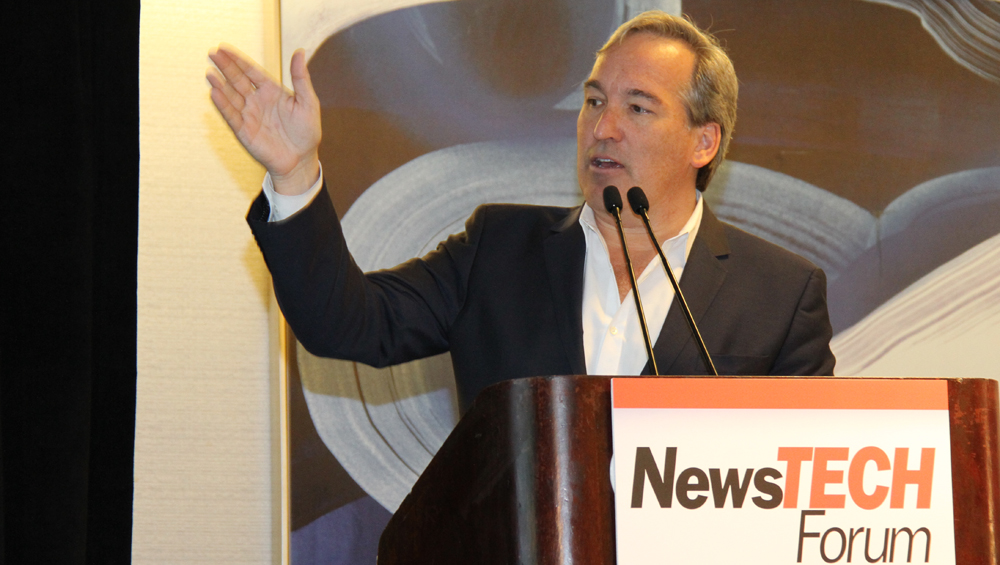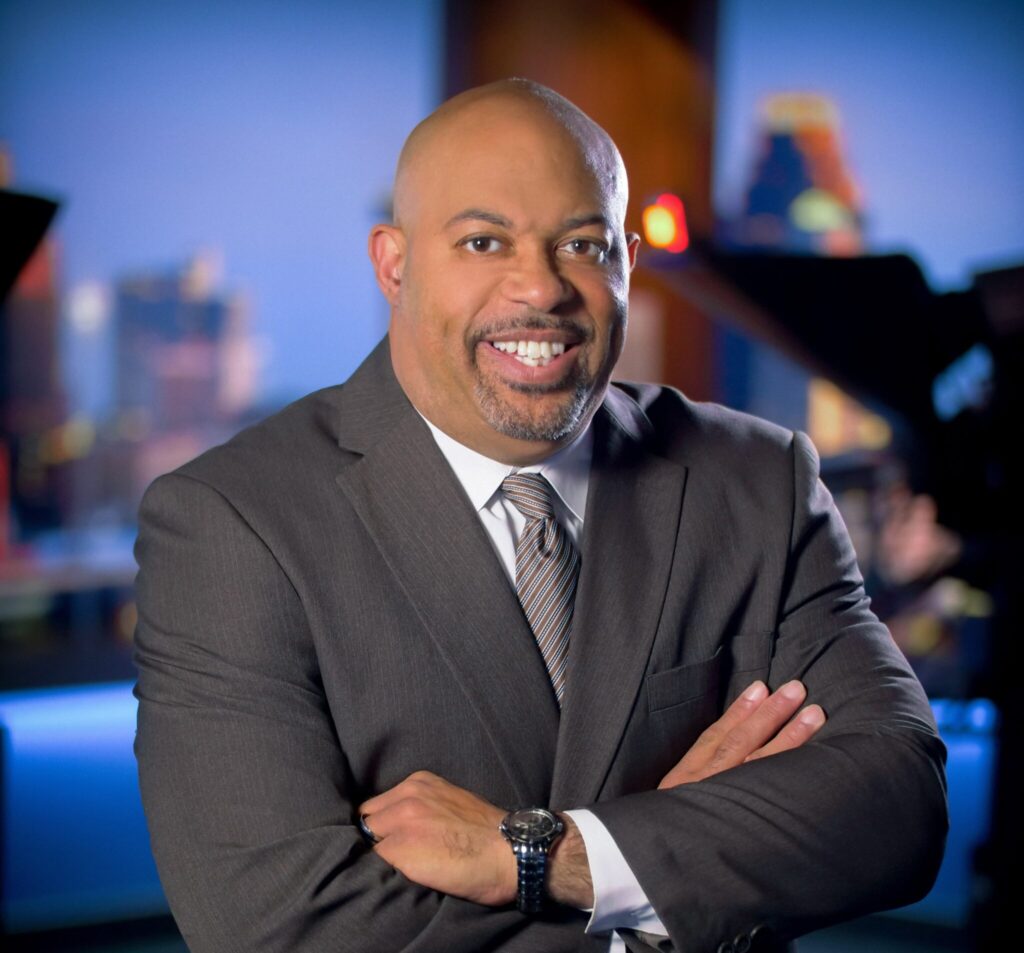
How Broadcasters Can Reach Young Viewers


Andrew Finlayson (Photo: Wendy Moger-Bross)
If broadcasters want younger viewers to continue watching their programming, they “have to become masters of the streaming environment,” a top media research exec told an audience of TV station execs at the sixth annual NewsTECHForum in New York on Monday.
Andrew Finlayson, senior VP, digital and social media strategies for SmithGeiger, said TV “still matters” to younger viewers, but they are continuing to change their viewing patterns from watching on linear broadcast to watching on streaming digital and mobile platforms.
“You can no longer just be a broadcaster,” Finlayson said. “You have to go beyond that.”
SmithGeiger has more than 100 TV station clients, along with multiple U.S. broadcast networks, so the company has vast experience working on mobile initiatives and digital and social media strategies.
Finlayson said the broadcasters that succeed in reaching these young viewers will need to have the technical and engineering staffs who will embrace new technologies.
Finlayson stressed that young viewers watch TV differently and broadcasters have to adapt. Some 91% of viewers 18-24 binge watch their favorite shows on digital platforms and 43% of them say they are binge watching more than ever.
However, live linear TV appointment watching has declined by 75% among those younger viewers. And 41% look at streaming options before they look at broadcast or cable.
Older millennials are also watching TV differently, with 57% of 25-34 year-olds actively watching TV via social media.
“People continue to watch TV in some form,” Finlayson said. The aggregate demand for TV viewing is not diminishing. But viewing patterns are and, he says, broadcasters must embrace this change.
How can they reach younger viewers better? Finlayson says broadcasters must make connecting with TV as convenient as possible. They must also make it easy for the audience to control the content and how to connect to it.
In addition to offering content across digital and social media platforms, broadcasters, particularly the stations, need to create and promote the usage of mobile apps, both for entertainment content and local news.
“You need to love your station apps and use them,” he said.
Finlayson says 46% of 18-24 year-olds still consider themselves “TV fans,” although they are watching more via streaming than linear. And 54% say they still tune into their favorite TV shows each week. But there is also a segment — 26% — who choose not watch live broadcast linear TV at all.
Some 60% of younger viewers say they watch Netflix, but Finlayson says some 59% also watch the local TV station news.
Finlayson told the station execs in attendance that they need to find ways to make their local news telecasts more important to younger viewers.
He said 76% of 18-24 year-olds believe watching TV shows is a social experience and 53% find out about TV buzz-worthy shows via social media. So stations need to find ways to create that buzz.
Finlayson suggests station execs watch their own content and try to understand how it is or is not relating to younger viewers.
Overall, Finlayson said TV stations need to become proficient in multiple areas aimed at promoting their content to younger viewers.
That includes creating word of mouth buzz about programming and news, using more streaming video, more social media, more mobile and more digital platforms. And also using audio, email, messaging and chat and digital out of home to promote content.
Read all our NewsTECHForum coverage:
IP Tools Complement Old Favorites In TV News
To Win At OTT, Think Programming
OTT Is Top-Of-Mind For CBS’s Christy Tanner
Journalists Bring Digital Aesthetic To Local News
NBC Stations’ Staab Underscores Localism, Tech
























Comments (1)
tvn-member-9348876 says:
December 11, 2018 at 11:02 am
I think one of the most challenging thing that our industry faces is coming to grips with how we define ourselves. In my opinion, broadcasting is not and never has been a business, it is a methodology for delivering services such as content and data. Over the years we have let our methodology be equated to the business we are really in which is content creation and distribution. Local “broadcast” stations need to expand their vision and recognize that their broadcast facilities are only one of the distribution methodologies that are available to the consumer and to the originators of content. While the technologies that are being deployed for both content creation and distribution are challenging and compelling, let’s not switch our identity from being identified by one methodology to being identified by several methodologies. Telling an interesting and compelling story and making it available to the audiences that want to watch it is what we are all about.